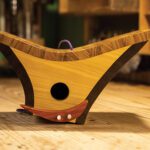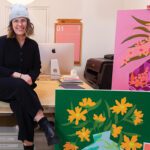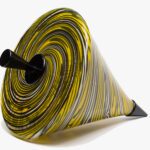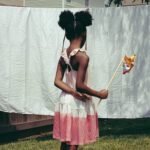A collector’s tale
March 2, 2020
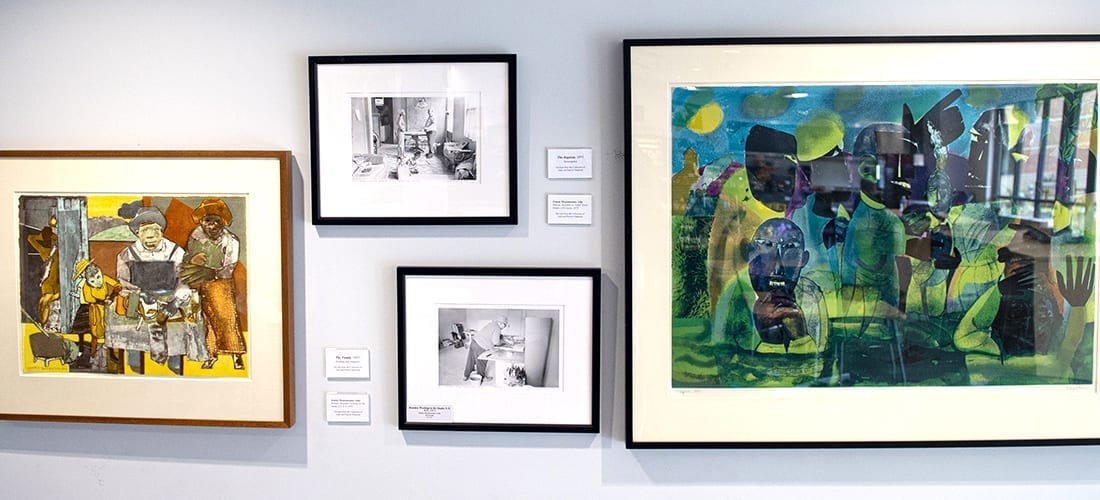
Patrick Diamond chronicles his journey as an avid collector of African American art.
by Cathy Martin
Before Patrick Diamond’s grandmother passed away in 2003, he promised her he’d write a book about how she inspired his interest in art. “I have shot past that deadline by a long time,” says Diamond, who with his wife, Judy, has spent the last 46 years amassing a collection of African American art that includes works by Romare Bearden, Elizabeth Catlett and Jacob Lawrence. This spring, Diamond will release a self-published memoir, The Incredible Joy of Collecting African American Art: My Journey from Frogtown, S.C., to the National Gallery, describing his experience.
What started as a casual hobby grew into a passion for the couple, college sweethearts who met in 1968 at Boston University.
“We never saw ourselves as collectors per se. We were just acquiring things initially to outfit our apartment,” Diamond says. The hobby grew after the birth of his son, Chad, who’s now a lawyer. “We wanted him to have some familiarity with art, maybe to be able to look at a Picasso painting and say, ‘Wow, that’s a wonderful painting, but I also know about Romare Bearden.’”

Diamond’s interest in art, however, goes back much further.
“I was born into abject poverty,” says Diamond, the youngest of three children raised by a single mom in Columbia, S.C. “At about age 5 or so, my mom fell in love with this guy, who became my stepfather.” Worried about how his family would react to his new stepchildren, Diamond’s stepfather kept the union a secret for several months before introducing Patrick and his sisters to his mother in Augusta, Ga.
“From the very first day, [my grandmother] embraced us — embraced me — in such a dynamic way. From that introduction, she became a critical part of my life, and I believe I became a critical part of her life,” Diamond says. “I fell in love with my grandmother on the day that we met.”
Her job as a housekeeper for a family that owned a used-furniture and antique business enabled her to acquire some extraordinary Chippendale and other finely crafted pieces of furniture.
“I was captivated by all of it,” Diamond says, recalling beautiful framed family photos, works of art and religious images throughout her home. “At an early age, these things were influencing, planting seeds for my ultimate interest in collecting art.”
Diamond says his attraction to African American art was natural, given that he’s lived much of his adult life in the South. Though his family moved to Brooklyn when he was 8, he spent much of his career working with Duke Energy and NCNB in Charlotte, Atlanta and Winston-Salem.
“Some of the artists that we were able to meet early on in the collecting experience and the focus of their art … they were trying to produce artwork that would lift the spirits of black people.”
Before the civil rights movement, blacks weren’t allowed to visit most museums, including the Mint Museum that opened on Charlotte’s Randolph Road in 1936.
“So these particular artists, a lot of the imagery depicted black people, black families, black children in settings that were inspirational,” Diamond says.
One chapter of his book describes how each time Diamond and his wife would move to a new home, they’d have to remove their African American artwork before showing the house to potential buyers.
Fortunately, attitudes in the South have largely shifted, while museums are acquiring African American art at a record pace, Diamond says.
“You know, we’ve been able to move past an awful lot of that. This interest in collecting, and the excitement, the richness of it all — it significantly overshadows those situations. … But that was a part of the experience,” he says.
“I decided to write the book because I felt so richly blessed in terms of some of the experiences that Judy and I have had over time.” SP
UPDATE: The Incredible Joy of Collecting African American Art is now available for purchase at Park Road Books and Foster’s Frame & Art Gallery in Huntersville, and online through Elder Gallery. In addition, look for copies at various museum shops when they reopen, including the Levine Museum of the New South and the Gantt Center.
featured image by Mike McCarn/Providence Day School
